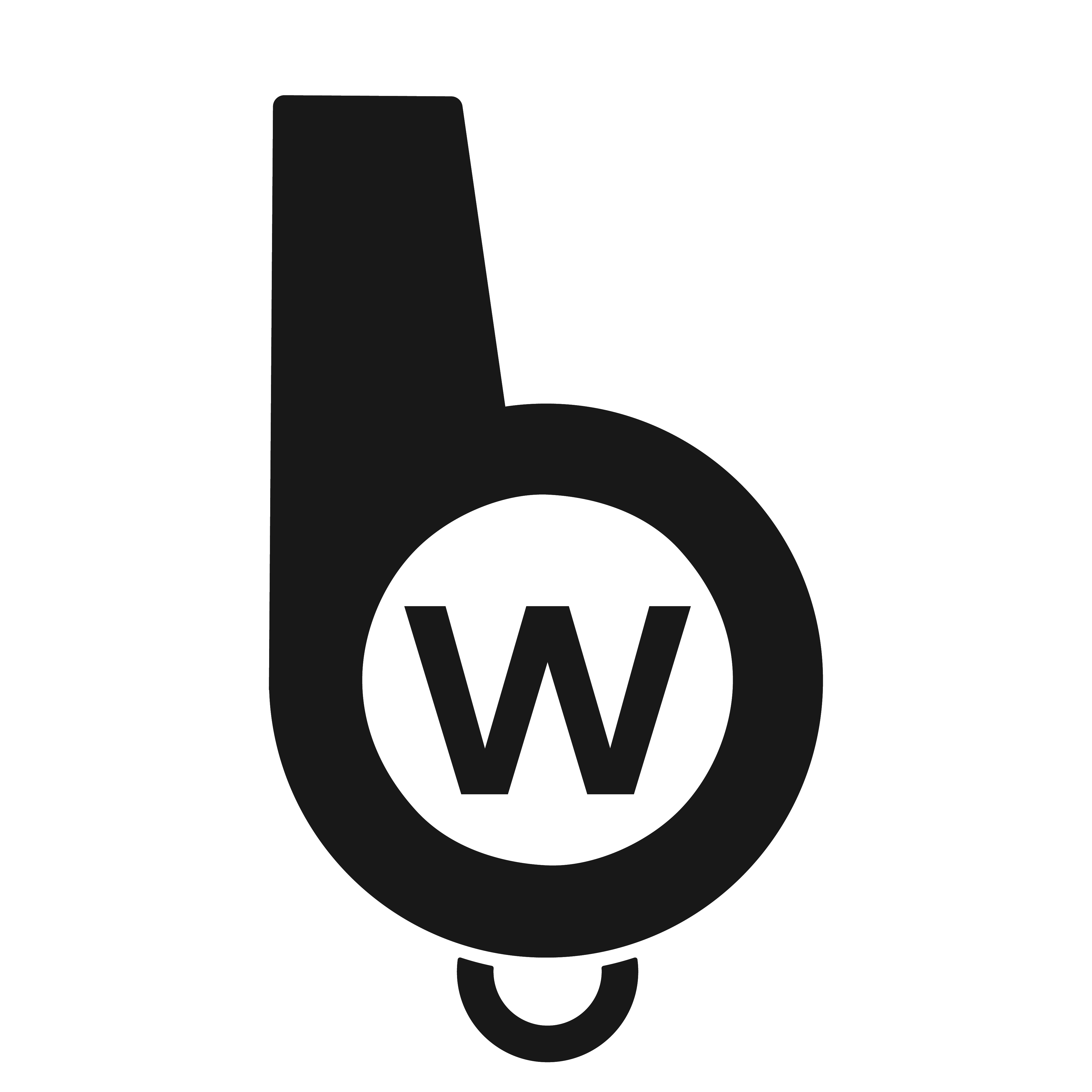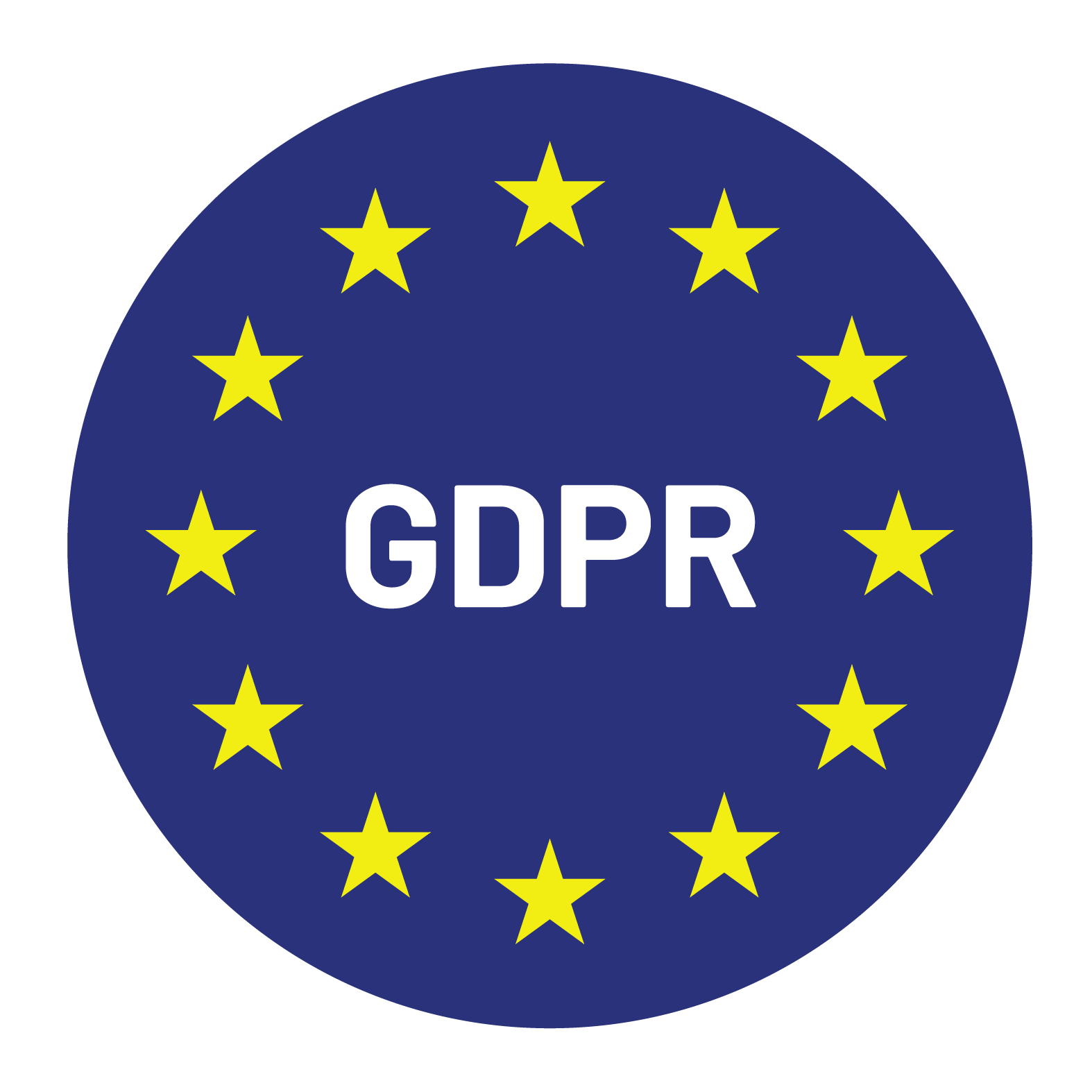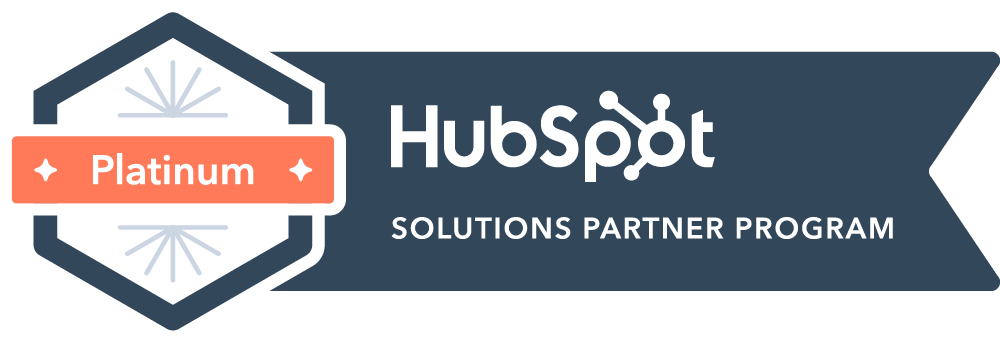10 Warning Signs Your Sales Team Needs an Appointment Generation Company
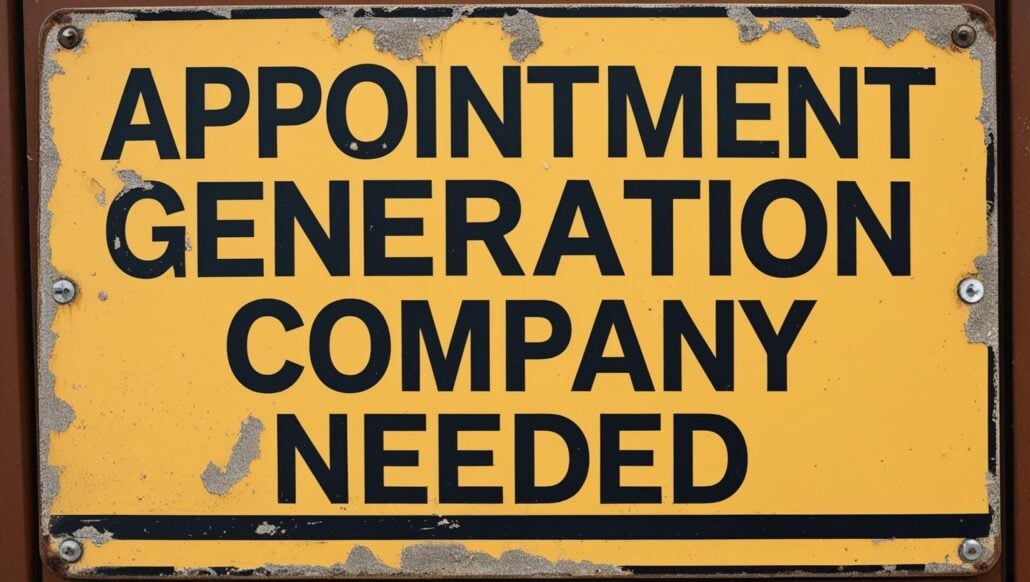
Table of Contents Your sales team is talented. They’re motivated, trained, and armed with the right tools. And yet your pipeline isn’t growing the way it should. If that sounds familiar, you’re not alone. The pressure to fill your sales pipeline has never been higher. Yet many B2B SaaS companies are watching their internal SDR teams struggle with outdated processes, resource constraints, and burnout that’s killing their outbound efforts. That’s where a SaaS lead generation company comes in. If your current approach isn’t delivering the meetings and pipeline growth you need, it might be time to consider a different strategy. Here are 10 clear indicators that outsourcing your SDR function could transform your sales results. 1. Your SDRs Spend More Time Researching Than Prospecting If your sales development reps are spending hours each day building lists, cleaning data, and hunting for decision-maker emails, you’ve got a problem. Manual prospecting drains time and energy from high-value tasks like outreach and follow-ups. Business Impact: If an SDR spends 60% of their day on research and only 40% on actual prospecting, you’re paying full-time salaries for part-time results. You’re also burning through your team’s motivation and energy on tasks that could be automated or handled by specialized data providers. Solution: Outsourced SDR services solve this with ready-to-go data, real-time enrichment, and tools that keep the prospecting engine running, without overloading your internal team with administrative grunt work. 2. Your Calendar Is Filled With Low-Quality Sales Meetings One of the most frustrating appointment-setting challenges is spending valuable AE time on meetings that go nowhere. Nothing kills sales momentum like a calendar full of unqualified prospects who aren’t ready to buy, don’t have a budget, or lack decision-making authority. When your AEs are burning time on these meetings, they’re not working on deals that could close. Even worse, poor-quality meetings damage team morale and make your sales organization less efficient overall. Business Impact: When your SDRs don’t have the right frameworks to identify genuine prospects, they’ll book meetings just to hit their numbers. Solution: Appointment generation companies work from a laser-focused ICP and pre-qualify every lead before it hits your calendar. They understand the difference between someone who’s merely interested and someone who’s ready to engage in a sales conversation. That means more B2B sales meetings with decision-makers who want to buy. 3. Your Team Can’t Scale Outreach Fast Enough Your SDRs can only do so much. There are only so many hours in a day, and scaling an internal team takes months of hiring, training, and ramping new reps. Meanwhile, your competitors are moving faster and capturing market share you could have won. Business Impact: Internal scaling comes with significant risks. New hires might not work out, training costs add up quickly, and there’s no guarantee your expanded team will hit their targets. Plus, you’re competing for talent in a tight market where experienced SDRs command premium salaries. Solution: A SaaS lead generation company offers the people power and systems to expand your reach overnight, without the growing pains. They’ve already solved the scaling challenges and can deploy proven resources immediately. 4. SDR Burnout and Turnover Are High Burnout is real. So is the cost of constantly rehiring and retraining SDRs. Internal teams often face unrealistic activity targets, limited support, and repetitive work, all of which lead to churn. Business Impact: The average SDR tenure is just 1.5 years, and turnover costs can exceed $15,000 per rep when you factor in recruitment, training, and lost productivity. Internal teams often face unrealistic activity targets, limited career development support, and repetitive work, all of which lead to churn. Solution: Outsourced SDR partners are built for this work. They handle the heavy lifting while your internal team focuses on strategic deals and closing revenue. Professional SDR companies have refined processes, ongoing training programs, and career advancement paths that keep their teams motivated and productive long-term. 5. You’re Stuck Using Outdated Outreach Tactics If your team is still sending one-size-fits-all cold emails or relying solely on LinkedIn, it’s no wonder your connect rates are flatlining. Your prospects expect personalized, relevant communication that shows you understand their business challenges. But creating this level of personalization at scale requires sophisticated tools, data insights, and specialized expertise that most internal teams lack. Business Impact: Low response rates lead to fewer booked meetings, missed revenue targets, and declining SDR morale. Over time, outdated tactics erode your brand credibility and allow competitors, who are using smarter, more personalized outreach, to win deals you never even had a chance at. Solution: Today’s top-performing outreach strategies are multichannel, hyper-personalized, and driven by data. Appointment generation companies use advanced sequencing tools and behavioral insights to increase response rates and land qualified meeting opportunities. They’re constantly testing new channels, refining messaging, and adapting to changing buyer preferences. 6. Your Sales Pipeline Is Unpredictable (or Empty) The dreaded pipeline drought. One month, your SDRs are killing it. The next? Crickets. Business Impact: This kind of inconsistency wreaks havoc on forecasting and revenue targets. When your pipeline is unpredictable, everything downstream suffers from sales planning to resource allocation to investor confidence. You can’t build a sustainable business on feast-or-famine pipeline generation. Solution: A SaaS lead generation company brings in consistent top-of-funnel activity through repeatable, optimized systems so your pipeline stays full, predictable, and growing. They’ve refined their processes through hundreds of campaigns and can maintain steady output regardless of internal distractions or market fluctuations. 7. Your SDR KPIs Aren’t Aligned with Revenue Outcomes If your SDRs are judged on how many calls they made instead of how many qualified meetings they booked, something’s broken. Business Impact: The disconnect between activity and outcomes creates a culture where SDRs focus on hitting numbers rather than generating real business value. They’ll dial through lists without proper research, send generic emails to meet quotas, and book low-quality meetings just to satisfy their KPIs. Solution: Lead generation partners work from a sales enablement strategy that ties
Why B2B Lead Providers Are Replacing Traditional Lead Generation Methods in 2026

Table of Contents B2B sales have changed more in the past five years than it did in the previous two decades. Buyers are no longer responding to high-volume outreach and generic campaigns. They expect tailored experiences that recognize their unique business context, pain points, and specific timing. At the same time, sales and marketing teams are under pressure to drive pipeline growth with greater efficiency. Since 2020, the typical buying process has lengthened, involving more stakeholders and more digital touchpoints. By 2025, most B2B buyers will report a preference for digital-first research and engagement over phone calls or in-person meetings. LinkedIn’s latest B2B marketing report highlights that over 70 percent of buyers consult at least three digital sources before engaging a vendor. Gartner’s research shows that buyers spend only 17 percent of their purchase journey meeting with potential suppliers. Traditional Lead Generation Methods That Are Failing Cold Calls Are Losing Ground Cold calling once served as the backbone of B2B sales development. But buyer behavior has moved on. With call screening, mobile-only workforces, and reduced appetite for unscheduled outreach, fewer than two percent of cold calls convert into meetings. Buyers increasingly treat unexpected calls as interruptions rather than opportunities. The Email Fatigue Problem Email outreach has faced similar resistance. The sheer volume of sales emails means most never make it past spam filters or are deleted without opening. HubSpot’s 2025 State of Marketing Report notes that email open rates for B2B campaigns have dropped below 15 percent on average. What once felt efficient has become a race to the bottom. Generic Content Marketing Saturation Content marketing remains vital, but generic blog posts, whitepapers, and newsletters no longer generate high-quality leads on their own. Buyers have access to more information than ever, and mediocre content is drowned out quickly. To stand out, companies now require highly relevant and context-rich materials that speak directly to target accounts. How AI Has Transformed Prospect Identification and Qualification AI-Driven Enrichment Tools Artificial intelligence has redefined how companies find and qualify prospects. Data enrichment tools can automatically update CRM records with job changes, funding rounds, or expansion signals. This keeps pipelines fresh and ensures outreach is timely. Predictive Scoring Models AI-based scoring goes beyond demographic fit. Predictive models use firmographic, technographic, and behavioral data to assess which accounts are most likely to convert. This eliminates wasted effort on low-potential leads and prioritizes the right opportunities for sales teams. Personalization at Scale One of the most significant benefits of AI is the ability to personalize outreach across thousands of contacts. From tailored subject lines to messaging that reflects company-specific challenges, personalization no longer requires manual effort. When executed correctly, it increases engagement rates dramatically and positions sales teams as informed rather than intrusive. The Rise of Account-Based Marketing (ABM) Why ABM Is Replacing Broad-Based Lead Generation Account-based marketing has become the go-to approach for B2B companies because it aligns sales and marketing on shared high-value targets. Instead of scattering resources across thousands of contacts, ABM concentrates efforts on the accounts most likely to generate revenue. Forrester’s research confirms that companies running ABM see a 200 percent increase in deal size compared to non-ABM strategies. ROI from Targeted ABM Approaches The returns are difficult to ignore. ABM produces higher conversion rates, stronger relationships, and measurable ROI. It emphasizes quality over quantity, which has proven far more effective in an environment where buyers expect personalized engagement. How B2B Lead Providers Run ABM Specialized B2B lead providers excel at scaling ABM because they combine intent data, enriched databases, and outbound expertise. By running targeted campaigns on behalf of clients, they eliminate inefficiencies while giving sales teams ready-to-convert opportunities. The Value of Intent Data in Modern Lead Generation What Is Intent Data and Why It Matters Intent data captures signals from buyer behavior such as web searches, content downloads, or product comparisons. It identifies which accounts are actively researching solutions, helping sales teams approach prospects at the right time. How B2B Lead Providers Utilize Intent Signals B2B lead providers aggregate intent signals across multiple sources to identify high-priority accounts. They use this intelligence to segment outreach and deliver messaging that resonates with specific stages of the buying cycle. ROI Difference Between Intent-Based and Traditional Lead Generation The difference in outcomes is stark. Campaigns guided by intent data consistently outperform traditional lead generation, with shorter sales cycles and higher close rates. Instead of guessing who might be in-market, sales teams engage accounts that are already signaling readiness to buy. Why Specialized B2B Lead Providers Are Becoming Essential Deep Vertical Expertise Generalist approaches no longer work. Lead providers that specialize in sectors like cybersecurity, SaaS, or healthcare bring knowledge of buyer pain points and decision-making processes. This expertise ensures campaigns are relevant and effective. Access to Enriched, Compliant Databases Regulations such as GDPR and CCPA have made compliance a top priority. Specialized providers maintain databases that are not only accurate but also compliant with privacy standards. This reduces risk while improving efficiency. Plug-and-Play Scalability For companies looking to scale quickly, building an in-house demand generation team is resource-intensive. B2B lead providers deliver plug-and-play scalability, adding capacity immediately without the costs of recruitment, training, or management. Whistle has seen firsthand how companies gain from outsourcing to specialists. Our work with global clients shows that pairing enriched data with targeted ABM strategies leads to faster pipeline growth and measurable ROI. How to Transition from Traditional to Modern Lead Generation Audit Your Tech Stack The first step is understanding which tools are working and which are not. Many companies run overlapping platforms that add complexity without delivering value. A thorough audit helps identify gaps and streamline operations. Implement a Phased Transition Approach Shifting to modern lead generation does not need to happen overnight. Start with pilot campaigns targeting a small set of accounts using AI-driven tools or intent data. Measure results, refine the process, and expand gradually. The Future of B2B Lead Generation How AI Will Continue to Transform Prospect Engagement AI will become
10 Questions to Ask Before Hiring a SaaS Lead Generation Company

Table of Contents In SaaS, your pipeline is everything. A strong flow of qualified meetings fuels growth, keeps your sales team focused, and ensures you’re not relying on “hope” to hit your revenue targets. But generating that pipeline consistently and at scale isn’t easy. That’s why many sales and marketing leaders turn to a SaaS lead generation company. The right partner can act as an extension of your team, delivering high-quality appointments with decision-makers who are ready to buy. The wrong partner? They can waste months of budget and erode trust with your target market. According to HubSpot’s State of Sales Report, 61% of marketers consider generating traffic and leads their top challenge. For SaaS companies specifically, this challenge is amplified by longer sales cycles and complex buying committees that can include everyone from IT managers to C-suite executives. To help you make the right call, here are 10 essential questions to ask any potential appointment setting partner before signing a contract. 1. Do They Specialize in SaaS or B2B Tech? Not all lead generation is created equal. Selling SaaS is very different from selling consumer products or one-off services. The sales cycles are longer, the stakeholders are more complex, and the value proposition often needs deep explanation. A B2B lead generation agency with SaaS experience will understand how to position subscription-based value, navigate multi-stakeholder buying groups, and use messaging that addresses both technical and business decision-makers. They’ll know that a typical SaaS sale involves an average of 6.8 stakeholders according to Gartner research, and they’ll craft outreach strategies accordingly. An agency that’s fluent in SaaS will ramp faster, produce better-qualified leads, and save you from costly trial-and-error. 2. What Is Their Approach to Targeting and ICP Alignment? One of the most common appointment setting challenges is chasing the wrong prospects. If your Ideal Customer Profile (ICP) is too broad or based on outdated assumptions your calendar will fill with low-value meetings. The best partners ask how you define and refine your ICP, whether you use firmographic, technographic, and intent data to guide targeting, and how often you review and adjust based on performance. According to Salesforce research, companies that align their sales and marketing teams around a well-defined ICP see 208% higher revenue growth. A sophisticated partner will leverage tools like ZoomInfo, Apollo, or Clearbit to build precise targeting frameworks that go beyond basic demographics to include technology stack, growth stage, and buying intent signals. Best practice: The right appointment setting partner will collaborate with you to build a precise targeting framework and continually fine-tune it to improve results. 3. How Do They Source and Enrich Lead Data? Great outreach starts with great data. If your partner is relying on generic list providers, you’ll get bounces, irrelevant contacts, and unresponsive prospects. Look for a lead qualification services partner who uses multiple trusted data sources, validates and enriches contact data in real time, and segments lists for personalized outreach. They should have processes for cross-referencing multiple databases, verifying email deliverability, and maintaining GDPR compliance. The cost of bad data is significant. IBM estimates that poor data quality costs U.S. businesses $3.1 trillion annually. In the context of lead generation, bad data means wasted outreach efforts, damaged sender reputation, and missed opportunities with your actual target prospects. Pro tip: Poor data is a silent pipeline killer. Ask for examples of their data hygiene process and how they maintain list freshness over time. 4. What Outreach Channels Do They Use? If a potential partner’s outreach strategy begins and ends with email, that’s a red flag. Modern top-of-funnel sales strategy blends multiple channels: email, phone, LinkedIn, and other social channels, and direct mail or events when relevant. Research from Rain Group shows that it takes an average of 8 touchpoints to generate a viable sales opportunity, and those touchpoints need to span multiple channels to be effective. Why multichannel wins: Different prospects respond to different mediums. The more touchpoints, the better your chances of starting a conversation. A sophisticated partner will also understand channel sequencing, knowing when to follow up an email with a phone call, or when to connect on LinkedIn after a successful email exchange. 5. How Do They Personalize Messaging at Scale? Prospects expect messages that feel relevant, not spammy templates blasted to thousands. According to Campaign Monitor, personalized email campaigns deliver 6x higher transaction rates. The challenge is maintaining personalization while operating at scale. Leading agencies use a combination of automation and human creativity to achieve this balance. They gather personalization insights from multiple sources—recent company news, social media activity, technology stack changes, or industry-specific pain points. A strong SaaS lead generation company will combine data signals with human creativity to craft messaging that feels one-to-one, even when running at scale. They’ll A/B test different messaging approaches and continuously optimize based on response rates and meeting quality. 6. What KPIs Do They Track and Report On? It’s easy to get dazzled by vanity metrics like “emails sent” or “calls made.” But what matters is the number of qualified sales opportunities generated. You should expect reporting on meetings booked, meeting attendance rates, conversion from meetings to sales-qualified opportunities (SQLs), and average deal size influenced. The best partners also track leading indicators like email open rates, response rates, and phone connection rates to identify potential issues before they impact results. According to Salesforce, companies that track the right sales metrics are 33% more likely to be high performers. A partner focused on outcomes rather than just activity will keep your pipeline aligned with revenue goals and provide actionable insights for improvement. 7. What Is the Qualification Process for Meetings? Not every booked meeting is worth your sales team’s time. A true appointment-setting best practices approach means leads are vetted before they hit your calendar. The qualification process should include confirming interest, authority, and fit before scheduling. They should verify that prospects have genuine buying intent, budget authority or influence, and a realistic timeline
How to Measure the Success of Your B2B Appointment Setting Agency

Table of Contents Securing meetings is easy to measure. Securing meetings that lead to revenue is where it gets interesting. A B2B appointment setting agency should be more than a calendar-filling service; it should also be a driver of qualified opportunities that move deals forward. Yet too often, businesses judge agency performance on the wrong metrics, focusing on numbers that look good on paper but do little for the bottom line. If you want to know whether your agency is truly adding value, you need more than a meeting count. You need a clear framework that captures both measurable results and the less visible indicators of a partnership that works. The Role of Appointment Setting in the B2B Sales Cycle In B2B sales, securing time with the right prospect is often one of the hardest steps in the process. Sales teams can have a well-crafted pitch, an exceptional product, and experienced account executives, but without a steady flow of qualified meetings, their pipeline stalls. This is where a B2B appointment setting agency makes a difference. An effective agency operates as an extension of your sales development efforts. It should consistently book meetings with decision-makers who are a strong fit for your solution and ready for meaningful sales conversations. These meetings should help sales teams focus on closing deals rather than chasing unqualified leads. However, the real measure of success is not the sheer number of calendar invites. It is whether the agency is delivering meetings that turn into real opportunities and, eventually, revenue. Defining What Success Looks Like for Your Business Every business has different sales cycles, revenue targets, and buyer personas. Before you can measure an agency’s success, you need to define what success means for you. The first step is aligning agency performance with your revenue goals. If your goal is to grow annual recurring revenue by 20 percent, then the agency’s output should be measured against how well it helps achieve that target. This requires looking beyond surface-level activity metrics and assessing conversion rates at each stage of the funnel. A shared definition of “qualified appointments” is essential. This should be documented and agreed upon between your team and the agency. Does “qualified” mean the contact meets your ICP, is a decision-maker, and has a defined budget? Does it require an active buying need, or is early-stage interest acceptable? Clarity here prevents misunderstandings and ensures that the agency is targeting the right prospects from the outset. Core KPIs to Measure Your B2B Appointment Setting Agency The most effective measurement framework blends volume, quality, and revenue metrics. Each tells part of the story, but together they provide a full picture of agency performance. Volume Metrics Volume metrics include the number of meetings booked, meetings held, and the percentage of meetings that occur compared to those scheduled. While these metrics are not the full story, they give a quick view of how active and productive the agency is in generating opportunities. Tracking meetings over time can help identify whether the agency is maintaining consistent output or if performance is tapering off after an initial burst of activity. Quality Metrics Quality is where the true value of an appointment setting agency becomes clear. Key indicators include the percentage of meetings with decision-makers, the proportion that fit your ICP, and the rate at which these meetings convert to qualified sales opportunities. High-quality meetings should lead to deeper pipeline stages and improve your close rates. If the agency is booking large numbers of meetings but the quality is poor, it will drain your sales team’s time and energy without contributing meaningfully to revenue. Revenue Impact Metrics Ultimately, the purpose of appointment setting is to generate revenue. Track metrics such as opportunities generated, deals closed from agency-sourced meetings, and the average deal size from those meetings. Comparing these results against other lead sources can reveal whether the agency is outperforming or underperforming relative to internal teams or other channels. Measuring Return on Investment (ROI) ROI should be one of the central measures of agency success. It is the clearest way to determine if the cost of the agency is justified by the revenue it generates, and it leaves little room for wishful thinking. To calculate ROI for outsourced appointment setting, compare the total cost of the agency to the revenue generated from deals originating in agency-booked meetings. This needs to be tracked over a period that matches your sales cycle; otherwise, you risk calling the score before the game is finished. Another useful check is cost-per-meeting versus the fully loaded cost of an internal SDR team. If the agency delivers a lower cost-per-meeting with equal or better quality, it is a strong sign they are worth keeping. Finally, look at the lifetime value (LTV) of clients acquired through agency-sourced meetings. If those clients show higher retention or greater expansion potential, the agency is delivering value that extends well beyond the initial deal, which is exactly the kind of return you want. Qualitative Success Factors Not all performance indicators are numerical. The best agencies deliver intangible value that contributes to long-term success. Communication and reporting cadence: Regular, transparent updates are essential. You should know what campaigns are running, how prospects are responding, and what adjustments are being made. Alignment with your ICP and brand messaging: The agency should represent your business in a way that is consistent with your positioning. This includes tone, language, and how they present your value proposition. Adaptability to market shifts: Markets change, buying patterns shift, and competitors adjust their strategies. An agency that can adapt its targeting and messaging accordingly will keep your pipeline healthy. Red Flags That Your Agency Might Not Be Performing Some performance gaps are subtle. Others are as obvious as a no-show on Zoom. If your agency is falling short, you will usually spot it in a few telling ways. Low decision-maker attendance: If most of your meetings are with junior staff who “will pass it along to the
10 Warning Signs Your Sales Team Needs an Appointment Generation Company
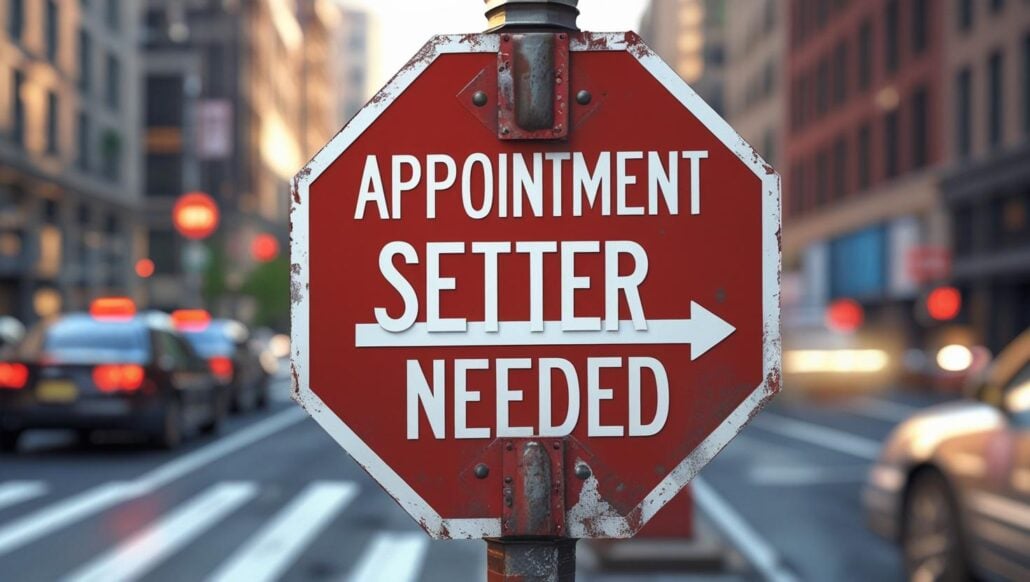
Table of Contents Your sales team is talented. They’re motivated, trained, and armed with the right tools. And yet your pipeline isn’t growing the way it should. If that sounds familiar, you’re not alone. The pressure to fill your sales pipeline has never been higher. Yet many B2B SaaS companies are watching their internal SDR teams struggle with outdated processes, resource constraints, and burnout that’s killing their outbound efforts. That’s where a SaaS lead generation company comes in. If your current approach isn’t delivering the meetings and pipeline growth you need, it might be time to consider a different strategy. Here are 10 clear indicators that outsourcing your SDR function could transform your sales results. 1. Your SDRs Spend More Time Researching Than Prospecting If your sales development reps are spending hours each day building lists, cleaning data, and hunting for decision-maker emails, you’ve got a problem. Manual prospecting drains time and energy from high-value tasks like outreach and follow-ups. Business Impact: If an SDR spends 60% of their day on research and only 40% on actual prospecting, you’re paying full-time salaries for part-time results. You’re also burning through your team’s motivation and energy on tasks that could be automated or handled by specialized data providers. Solution: Outsourced SDR services solve this with ready-to-go data, real-time enrichment, and tools that keep the prospecting engine running, without overloading your internal team with administrative grunt work. 2. Your Calendar Is Filled With Low-Quality Sales Meetings One of the most frustrating appointment-setting challenges is spending valuable AE time on meetings that go nowhere. Nothing kills sales momentum like a calendar full of unqualified prospects who aren’t ready to buy, don’t have a budget, or lack decision-making authority. When your AEs are burning time on these meetings, they’re not working on deals that could close. Even worse, poor-quality meetings damage team morale and make your sales organization less efficient overall. Business Impact: When your SDRs don’t have the right frameworks to identify genuine prospects, they’ll book meetings just to hit their numbers. Solution: Appointment generation companies work from a laser-focused ICP and pre-qualify every lead before it hits your calendar. They understand the difference between someone who’s merely interested and someone who’s ready to engage in a sales conversation. That means more B2B sales meetings with decision-makers who want to buy. 3. Your Team Can’t Scale Outreach Fast Enough Your SDRs can only do so much. There are only so many hours in a day, and scaling an internal team takes months of hiring, training, and ramping new reps. Meanwhile, your competitors are moving faster and capturing market share you could have won. Business Impact: Internal scaling comes with significant risks. New hires might not work out, training costs add up quickly, and there’s no guarantee your expanded team will hit their targets. Plus, you’re competing for talent in a tight market where experienced SDRs command premium salaries. Solution: A SaaS lead generation company offers the people power and systems to expand your reach overnight, without the growing pains. They’ve already solved the scaling challenges and can deploy proven resources immediately. 4. SDR Burnout and Turnover Are High Burnout is real. So is the cost of constantly rehiring and retraining SDRs. Internal teams often face unrealistic activity targets, limited support, and repetitive work, all of which lead to churn. Business Impact: The average SDR tenure is just 1.5 years, and turnover costs can exceed $15,000 per rep when you factor in recruitment, training, and lost productivity. Internal teams often face unrealistic activity targets, limited career development support, and repetitive work, all of which lead to churn. Solution: Outsourced SDR partners are built for this work. They handle the heavy lifting while your internal team focuses on strategic deals and closing revenue. Professional SDR companies have refined processes, ongoing training programs, and career advancement paths that keep their teams motivated and productive long-term. 5. You’re Stuck Using Outdated Outreach Tactics If your team is still sending one-size-fits-all cold emails or relying solely on LinkedIn, it’s no wonder your connect rates are flatlining. Your prospects expect personalized, relevant communication that shows you understand their business challenges. But creating this level of personalization at scale requires sophisticated tools, data insights, and specialized expertise that most internal teams lack. Business Impact: Low response rates lead to fewer booked meetings, missed revenue targets, and declining SDR morale. Over time, outdated tactics erode your brand credibility and allow competitors, who are using smarter, more personalized outreach, to win deals you never even had a chance at. Solution: Today’s top-performing outreach strategies are multichannel, hyper-personalized, and driven by data. Appointment generation companies use advanced sequencing tools and behavioral insights to increase response rates and land qualified meeting opportunities. They’re constantly testing new channels, refining messaging, and adapting to changing buyer preferences. 6. Your Sales Pipeline Is Unpredictable (or Empty) The dreaded pipeline drought. One month, your SDRs are killing it. The next? Crickets. Business Impact: This kind of inconsistency wreaks havoc on forecasting and revenue targets. When your pipeline is unpredictable, everything downstream suffers from sales planning to resource allocation to investor confidence. You can’t build a sustainable business on feast-or-famine pipeline generation. Solution: A SaaS lead generation company brings in consistent top-of-funnel activity through repeatable, optimized systems so your pipeline stays full, predictable, and growing. They’ve refined their processes through hundreds of campaigns and can maintain steady output regardless of internal distractions or market fluctuations. 7. Your SDR KPIs Aren’t Aligned with Revenue Outcomes If your SDRs are judged on how many calls they made instead of how many qualified meetings they booked, something’s broken. Business Impact: The disconnect between activity and outcomes creates a culture where SDRs focus on hitting numbers rather than generating real business value. They’ll dial through lists without proper research, send generic emails to meet quotas, and book low-quality meetings just to satisfy their KPIs. Solution: Lead generation partners work from a sales enablement strategy that ties
The 7-Step B2B SaaS Demand Generation Blueprint To Build a Revenue Engine
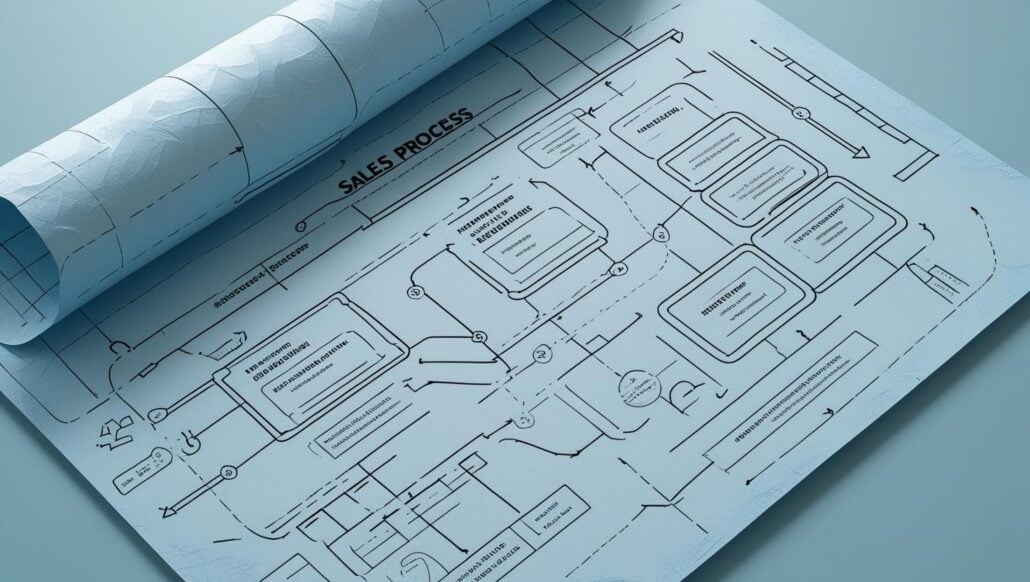
Table of Contents B2B SaaS companies are operating in an environment where acquiring customers is costly, sales cycles are lengthy, and standing out in the market requires precision. It is not enough to generate interest at the top of the funnel and hope it converts. A single missed step in your marketing and sales process can turn what appears to be a promising pipeline into stalled deals and wasted resources. Demand generation offers a way to bring order and intent to growth efforts. It is about creating sustained interest in your product, engaging the right buyers at the right time, and ensuring that interest translates into revenue. Unlike lead generation, which often focuses on volume, demand generation is designed to align marketing investment directly with pipeline creation and closed sales. The seven steps below will help you build a demand generation system that is both strategic and actionable. Each step addresses the structural foundations and day-to-day execution that together form a reliable revenue engine. Why Demand Generation ≠ Lead Generation Lead generation captures names. Demand generation builds market readiness. The distinction matters because a contact in your database is not necessarily a qualified prospect, and a download does not guarantee intent to buy. In the B2B SaaS sector, where products often require significant education and involve multiple decision-makers, you cannot shortcut the process. Demand generation focuses on creating informed, interested buyers who enter conversations already understanding the value your solution offers. This approach produces fewer wasted sales calls, shorter sales cycles, and a stronger link between marketing activity and revenue growth. What This 7-Step Playbook Will Deliver The following steps provide a practical framework for moving beyond disconnected campaigns and into a coordinated, measurable system. From defining your target market with precision to aligning sales and marketing, activating demand through SDR teams, and optimising for scale, each stage is designed to create a repeatable process for generating high-quality opportunities. Step 1 – Nail Your ICP and Buyer Personas A demand generation program is only as strong as its targeting. Without a clear Ideal Customer Profile (ICP) and well-defined buyer personas, even the most sophisticated campaign will waste time on audiences that will never convert. Begin by identifying your most profitable customers. Look beyond revenue to factors such as retention rates, expansion potential, and support requirements. This will highlight the industries, company sizes, and regions that produce the healthiest returns. From there, develop detailed personas for each buyer type. Include their role in the decision-making process, the problems they need to solve, and the triggers that prompt them to act. It is essential to bring both sales and marketing teams into this process. Sales teams can surface real-world insights about objections, timelines, and internal dynamics that may not be visible in analytics. These insights will ensure your targeting is both accurate and practical. Step 2 – Audit and Align Your Marketing & Sales Funnel Demand generation cannot succeed if marketing and sales operate as separate functions. When definitions, handover points, and success metrics differ, opportunities are lost. Start with a full mapping of your funnel from first touch to closed deal. Define the criteria for moving prospects between stages and ensure both teams use the same language for terms like MQL, SQL, and opportunity. Review historical conversion rates to identify where prospects stall or drop off entirely. An aligned funnel means shared accountability. Instead of measuring marketing by lead quantity and sales by closed revenue, set joint goals such as pipeline value, opportunity-to-close rate, and sales cycle length. These measures encourage collaboration and keep both teams focused on the ultimate outcome: revenue. Step 3 – Build a Multi-Channel Demand Generation Strategy No single channel can sustain healthy pipeline growth. An effective B2B SaaS demand generation strategy integrates inbound, outbound, and paid media to reach prospects at different stages and through different touchpoints. Inbound tactics, such as SEO, thought leadership articles, and educational content, attract prospects already looking for solutions. Outbound efforts, often driven by SDR teams, focus on targeted outreach to high-value accounts. Paid media can accelerate both, placing your content in front of the right audiences with precision targeting. These channels must work together. Messaging, targeting, and timing should be coordinated so that a prospect who reads a blog, receives an email, and is contacted by an SDR experiences a consistent and reinforcing narrative. Review your channel mix regularly. What works well for a quarter may lose effectiveness if audience behaviour shifts or a competitor changes their approach. Step 4 – Create Content That Generates Demand, Not Just Leads Content is one of the most powerful tools in demand generation, but too often it is used solely to capture contact details. This narrow focus misses the opportunity to shape buyer thinking before they actively seek a solution. For B2B SaaS companies, effective content addresses the questions and challenges that matter to your target buyers long before they engage with sales. This could include industry benchmarks, problem-solving guides, detailed case studies, or commentary on regulatory trends. Content should be designed to educate, build credibility, and position your brand as a trusted resource. Measure content success by more than downloads or page views. Track how content engagement translates into pipeline creation and deal progression. A white paper that generates fewer leads but is consistently associated with high-value opportunities is far more valuable than a popular blog post that never converts. Step 5 – Use Marketing Automation and Personalisation Once prospects begin engaging with your brand, speed and relevance are critical. Marketing automation allows you to maintain consistent, timely contact without overwhelming your team, while personalisation ensures that communication feels tailored rather than generic. Select a marketing automation platform that integrates seamlessly with your CRM. Use it to deliver nurturing sequences, trigger follow-ups based on behaviour, and segment audiences by their position in the buying cycle. Personalisation should go beyond inserting a first name. Referencing industry-specific challenges, reflecting on a prospect’s role, or acknowledging previous interactions signals that you understand
Where to Find a Trusted SDR Offshoring Agency: 5 Top Platforms

Table of Contents Hiring a trusted SDR offshoring agency can transform your outbound sales program, cutting costs, speeding up ramp time, and unlocking new markets without the headache of hiring in-house. The challenge? The outsourcing scene is crowded. Every agency promises quality leads and cost efficiency, but not all deliver. The best way to separate signal from noise is to start your search on reputable review platforms, where verified client feedback, case studies, and transparent ratings help you make informed decisions. Below, we highlight five platforms where you can find vetted SDR partners, compare capabilities, and choose an agency that aligns with your goals. 1. Clutch Why it’s worth exploring: Clutch.co is one of the most recognized B2B review platforms, featuring in-depth case studies and ratings for thousands of agencies worldwide. Their detailed filters allow you to search by service focus (like sales development), location, budget, and company size. What sets Clutch apart from other platforms is their rigorous verification process. Every review goes through analyst validation, meaning you’re reading genuine feedback from real clients who’ve actually worked with these agencies. This eliminates the noise of fake reviews that plague other platforms. Key benefits: Verified client interviews conducted by Clutch analysts Service and industry filters for precise searches Rankings based on market presence and client feedback Detailed project breakdowns showing budget ranges and outcomes Direct contact information for shortlisted agencies The platform’s strength lies in its comprehensive agency profiles. You’ll find detailed information about team size, hourly rates, notable clients, and specific service offerings. Most importantly, Clutch provides context around each review: you can see the project scope, budget, and timeline that led to specific feedback. Pro tip: Look for agencies with multiple recent reviews and a consistent rating above 4.5 stars—this shows both performance and stability. Pay special attention to reviews from companies similar to yours in size and industry. 2. G2 Why it’s worth exploring: G2 is primarily known for software reviews but also features service providers, including SDR offshoring companies. Its real strength is the volume of authentic user feedback; millions of professionals contribute reviews across industries. What makes G2 particularly valuable for SDR agency selection is its focus on user experience and satisfaction metrics. The platform breaks down reviews by specific criteria like ease of collaboration, quality of deliverables, and return on investment, giving you granular insights into what working with each agency feels like. Key benefits: Peer-to-peer review insights from verified users Comparison charts for service providers G2 “Grid” ratings showing leaders vs. challengers Integration and tech stack compatibility ratings Seasonal reports highlighting market trends G2’s Grid methodology is especially useful for understanding market positioning. Agencies are plotted based on customer satisfaction scores and market presence, helping you identify both established leaders and emerging challengers that might offer better value or specialized expertise. Pro tip: Use G2 to validate an agency’s tool stack expertise (e.g., HubSpot, Salesforce, Outreach.io) if you need tech alignment. The platform’s integration reviews can save you from compatibility headaches down the road. 3. GoodFirms Why it’s worth exploring: GoodFirms is another trusted directory that lists B2B lead generation and SDR agencies globally. It offers curated lists based on research methodology, client feedback, and market penetration. GoodFirms distinguishes itself through its research-driven approach to agency evaluation. Their team conducts independent research to verify agency capabilities, going beyond client testimonials to assess technical competencies, team expertise, and market reputation. Key benefits: Comprehensive company profiles with case studies Ability to compare agencies side-by-side Focus on small to mid-market service providers Research-backed agency rankings Detailed service breakdowns and pricing transparency The platform excels at showcasing agencies that specialize in specific niches or serve particular market segments. If you’re a mid-market company looking for personalized attention rather than enterprise-scale operations, GoodFirms often surfaces hidden gems that larger platforms might overlook. Pro tip: Combine GoodFirms research with LinkedIn references to check cultural and communication fit. The platform provides team member information that you can cross-reference for additional validation. 4. UpCity Why it’s worth exploring: UpCity focuses on building trusted relationships between businesses and service providers. While smaller than Clutch, it has a growing directory of outsourced SDR and lead generation partners with transparent reviews. UpCity’s unique value proposition is its emphasis on partnership over transaction. The platform prioritizes agencies that demonstrate long-term client relationships and collaborative approaches, making it ideal for companies seeking strategic partnerships rather than one-off projects. Key benefits: Partnership and certification badges for top performers Location and service filters to narrow your search Clear breakdown of pricing and service tiers Focus on relationship-building and long-term partnerships Local market expertise for region-specific campaigns The certification system helps identify agencies that have demonstrated consistent performance and client satisfaction over time. These badges aren’t just marketing fluff—they’re based on verified client outcomes and retention rates. 5. DesignRush Why it’s worth exploring: DesignRush is best known for creative agencies but increasingly lists sales and lead generation companies. Their editorial “Best Of” lists are helpful for quickly spotting vetted SDR agencies. While DesignRush might seem like an unexpected choice for SDR agency selection, its editorial approach provides valuable context that purely review-based platforms miss. Their industry experts analyze market trends, agency capabilities, and client success patterns to create curated recommendations. Key benefits: Curated agency lists by industry focus Editorial insights and expert commentary Quick quotes feature to request multiple proposals Industry trend analysis and market intelligence Streamlined vendor selection process The platform’s strength lies in its ability to surface agencies that excel in specific verticals or service areas. Their editorial team identifies emerging trends and highlights agencies that are adapting to new market demands. How to Choose the Right SDR Offshoring Agency Finding a list of agencies is just step one. To choose the right partner, you need to dig deeper into their capabilities and cultural fit. Here’s how to evaluate your shortlisted candidates: Validate expertise in your industry: Ask for case studies in your vertical (e.g., SaaS, cybersecurity, fintech). Look for
7 Reasons Your In-House Appointment Setting Strategy Is Failing in 2025

Table of Contents B2B sales teams are under more pressure than ever to convert interest into meetings. Yet for many companies, the in-house appointment setting model continues to underdeliver. Sales pipelines look full on paper, but meetings are rescheduled, canceled, or never qualified properly in the first place. The volume is there, but the value isn’t. This article examines why that’s happening. Not at the surface level, but in the structure, incentives, and assumptions behind in-house strategies. We’ll look at the seven most common breakdowns in appointment setting today, from hiring and training gaps to inefficient tools and misaligned targets, and explain when it makes sense to consider partnering with appointment generation companies that know how to execute at scale. 1. Inadequate SDR Hiring and Training The Problem Most in-house teams underestimate how difficult it is to recruit and ramp high-performing Sales Development Representatives. The SDR role demands a specific mix of resilience, curiosity, and commercial awareness. Hiring for those traits is hard. Training for them is harder. Yet too many companies treat SDR onboarding as a short-term boot camp, not a long-term development program. The result is high turnover, inconsistent execution, and reps who never get comfortable with your value proposition or ICP. The Impact Poor hiring and rushed training create downstream issues. Calls lack context. Emails are templated and off-mark. Prospects disengage early. When SDRs aren’t confident or credible, appointment rates drop, and so does the trust between marketing, sales, and leadership. Solutions Start with clarity on the SDR profile that fits your market and sales motion. Build a structured onboarding that includes market education, objection handling, and shadowing with experienced reps. If that level of investment isn’t sustainable internally, it may be time to evaluate outsourced SDR services with proven training infrastructure. 2. Ineffective Targeting and Prospect Research The Problem If your targeting criteria are based on firmographics alone, your reps are likely wasting time. Many in-house teams rely on outdated or overly broad account lists, pulled from generic databases or old CRM exports. The issue isn’t just who you’re reaching, it’s how little you know about them. When reps don’t understand a prospect’s role, pain points, or priorities, their outreach feels generic and gets ignored. The Impact Bad targeting inflates your activity metrics while draining rep morale. You’ll book more meetings with the wrong people and fewer with real buyers. That clogs your funnel with poor-fit leads and makes it harder for AEs to close qualified deals. Solutions Refine your B2B appointment setting strategy by layering firmographics with behavioral signals and buying triggers. Align with marketing to build a clearer ICP and use tech that enables smarter segmentation. Appointment generation companies often bring dedicated research teams to enrich prospect lists, a major time and quality advantage. 3. Outdated or Inefficient Outreach Strategies The Problem If your SDRs are still working through linear email sequences and relying on outdated call scripts, you’re not meeting prospects where they are, or how they expect to be approached. Today’s buyers are harder to reach and quicker to tune out. Static outreach tactics no longer cut through, especially in crowded categories where every competitor is running a similar cadence. The Impact Prospects ignore canned emails. Cold calls go unanswered. Response rates drop, and reps lose confidence. Even if a few meetings get booked, they often feel forced and unqualified. Solutions Update your outreach with personalized messaging, intent-driven timing, and multichannel tactics. Mix calls, emails, LinkedIn, and video. Review performance weekly, not quarterly. Experienced appointment generation companies continuously test and optimize outreach tactics across industries, which often makes their results more reliable. 4. Technology Stack Limitations The Problem Your reps are only as effective as the systems behind them. But many in-house teams are stuck with a mismatched or underutilized tech stack. CRMs don’t sync with outreach tools. Data enrichment platforms are inconsistent. Call analytics are nonexistent. Even worse, reps often spend more time navigating platforms than speaking to prospects. The Impact Operational drag kills productivity. It slows down outreach, weakens personalization, and limits visibility into performance. If you can’t track the full appointment setting funnel, you can’t improve it. Solutions Audit your current tech stack and assess what’s being used, what’s not, and what’s causing friction. Tools should enable speed and insight, not add complexity. Outsourced SDR services often come with purpose-built infrastructure that eliminates these problems from day one. 5. Misaligned Metrics and Incentives The Problem What your SDRs are measured on is what they’ll prioritize. Too often, that’s activity volume or number of meetings booked, without enough scrutiny on meeting quality or downstream conversion. In-house teams tend to default to metrics they can control quickly, which pushes reps to chase easy wins rather than qualified leads. The Impact You end up with inflated meeting numbers that don’t turn into pipeline. AEs get frustrated. Marketing questions attribution. Leadership doubts the whole function. It’s not a performance issue, it’s a misalignment issue. Solutions Tie SDR incentives to qualified opportunities, not just meetings held. Use conversion data to refine what counts as success. Build a feedback loop between SDRs and AEs. Outsourced appointment generation companies often run on outcome-based models, which keep both sides focused on pipeline, not vanity metrics. 6. Scaling Challenges The Problem Even if your in-house team is performing well, scaling it is another matter. Hiring takes time. Training takes resources. Managing a bigger team introduces complexity and cost, especially across multiple markets or time zones. There’s also risk. One bad quarter and your investment in headcount becomes a liability. The Impact You either grow too slowly and miss market opportunities, or you scale too fast and sacrifice quality. Neither is sustainable. A brittle model breaks under pressure. Solutions Define what parts of your appointment setting strategy need to scale, geography, industry, and language, and assess if your team can support it. If not, outsourcing to a specialized SDR partner can help you expand reach without ballooning internal costs or complexity.
The SaaS Lead Qualification Framework: How to Identify High-Value Prospects

Table of Contents Why Lead Qualification Matters for SaaS Companies SaaS sales teams often face a paradox. Demand generation delivers a steady influx of leads, yet conversion rates stay flat or decline. The problem is not always at the top of the funnel. More often, it is that too many resources are spent pursuing prospects who were never likely to convert in the first place. Industry data shows that sales teams spend up to 50% of their time on unqualified leads. In SaaS, where sales cycles can span months and require extensive demos, trials, and technical assessments, wasted time has a direct impact on customer acquisition cost (CAC) and quota attainment. A single poorly qualified prospect can drain hours from account executives and sales engineers, reduce morale, and push revenue forecasts off track. Effective lead qualification does more than weed out poor fits. It creates a healthier pipeline, improves conversion rates, and ensures that sales teams focus on the prospects most likely to buy. For SaaS companies, the difference between a well-qualified lead and a poor one is about revenue potential and whether the sales process is sustainable and scalable. Why Lead Qualification is Particularly Challenging for SaaS The SaaS sales cycle often involves multiple decision-makers, complex integrations, and proof-of-concept stages. Unlike transactional sales, SaaS solutions require a fit on several fronts: technical, operational, and organizational. Many prospects are enthusiastic during initial conversations but underestimate the effort required to implement new software. Others may have genuine interest but lack budget approval or executive sponsorship. Without a structured qualification process, these deals linger in the pipeline, distorting forecasts and reducing sales efficiency. This is why a tailored B2B lead qualification framework for SaaS is essential. Generic criteria rarely capture the nuances of a subscription-based, high-touch sales model. The Evolution of Lead Qualification Frameworks Traditional frameworks such as BANT (Budget, Authority, Need, Timeline) and ANUM (Authority, Need, Urgency, Money) have shaped sales methodology for decades. They are easy to remember, which is why many SDRs still rely on them. However, these approaches were designed for an era when decision-making was faster and purchasing processes were simpler. In SaaS sales, the customer journey involves more stakeholders, more evaluation stages, and a deeper focus on long-term ROI. Budgets may be fluid, timelines flexible, and buying authority distributed across teams. The limitations of these older models have prompted a shift toward buyer-centric qualification approaches. Instead of pushing prospects through a rigid checklist, modern SaaS sales teams use frameworks that adapt to the prospect’s buying process while still filtering for the factors that signal a high-value opportunity. The SaaS-Specific Lead Qualification Framework A high-quality SaaS lead qualification process must assess five core components: Technical Fit — Can the product integrate with the prospect’s current systems? Does it meet security, compliance, and infrastructure requirements? Business Fit — Does the prospect match your ideal customer profile (ICP) in terms of size, industry, use case, and pain points? Is the problem you solve a priority for them? Timeline — Is the prospect ready to buy within a reasonable period? Do they have internal milestones that align with implementation? Budget — Can they realistically afford the solution? Have they indicated willingness to invest? Authority — Does your contact have the ability to approve the purchase, or at least influence the decision-making process? A B2B SaaS sales pipeline qualification process that incorporates all five elements provides a more reliable forecast and prevents pipeline bloat. Qualification Scoring Methodology Lead scoring should not be arbitrary. A structured SaaS lead scoring methodology assigns weighted values to each qualification factor based on historical conversion data. For example, a prospect with strong technical and business fit but no confirmed budget may receive a medium score. A prospect with confirmed budget, urgent timeline, and decision-making authority may score significantly higher, even if technical integration requires extra steps. Sales development representatives (SDRs) should update scores as new information emerges. This dynamic approach ensures that pipeline forecasts remain accurate and that sales priorities shift when necessary. Red Flags to Spot Early Identifying red flags early prevents wasted effort. Common signs include: Vague problem statements (“We’re just exploring options”) No clear timeline or urgency Limited engagement from decision-makers Indecision about budget allocation Misalignment with ICP or core use cases These indicators do not always mean a deal should be abandoned immediately, but they should trigger deeper qualification before investing significant resources. Essential Qualification Questions for SaaS Sales Teams The right questions reveal whether a prospect is worth pursuing. They should be specific enough to produce actionable answers, yet open enough to encourage conversation. Technical Fit Questions “Which tools are you currently using?” “How does your team integrate new software?” Business Pain Discovery “What specific problem are you looking to solve?” “What impact does this challenge have on your team’s KPIs?” Budget and Timeline Exploration “Have you allocated budget for this solution?” “What’s your ideal go-live timeline?” Authority and Decision-Making “Who else will be evaluating this solution with you?” “How does your approval process typically work?” When SDRs master these questions, they not only qualify more effectively but also build trust by demonstrating a genuine interest in solving the prospect’s problems. Implementing the Framework in Your Sales Process Where Qualification Fits in the Funnel Qualification should start the moment a lead enters your pipeline and continue throughout the sales cycle. Early qualification ensures that SDRs pass only viable opportunities to account executives. Ongoing qualification prevents resources from being wasted on opportunities that stall. Setting Up Your CRM for Qualification A CRM configured for qualification ensures consistency. Fields for technical fit, business fit, budget, timeline, and authority should be mandatory. Integrating lead scoring into the CRM helps prioritize follow-up and provides real-time visibility into pipeline health. Training SDRs to Qualify Effectively The best framework will fail without proper training. SDRs should understand not just the questions to ask, but why those questions matter. Role-playing scenarios, call reviews, and shadowing experienced reps can all strengthen
8 Success Metrics Every Outbound Lead Generation Agency Should Track

Table of Contents When you hire an outbound lead generation agency, the ultimate goal isn’t just a packed pipeline. It’s predictable revenue growth. But how do you know if your agency is truly delivering beyond vanity metrics like “leads booked” or “emails sent”? That’s where success metrics come in. By tracking the right indicators, you’ll see the full picture: quality of leads, conversion health, and long-term ROI. 1. Qualified Meetings Set vs. Total Meetings Why it matters: Not all meetings are created equal. Measuring the ratio of qualified meetings (those that match your ICP and have buying intent) versus total meetings helps you avoid wasting sales resources. Your sales team’s time is precious. When agencies focus solely on booking volume, your reps end up in conversations that lead nowhere. A qualified meeting should check three essential boxes: the prospect matches your ideal customer profile, demonstrates genuine buying intent, and has decision-making authority or influence. The difference between quantity and quality becomes clear when you track conversion rates. Unqualified meetings might fill your calendar, but they drain sales energy and create false pipeline optimism. Quality-focused agencies implement robust qualification frameworks during initial outreach, asking discovery questions and verifying budget availability before scheduling. What to track: Percentage of booked meetings that meet qualification criteria Drop-off between booked and attended meetings Benchmark: A strong agency should deliver 70%+ qualified meetings consistently. 2. Cost per Qualified Lead (CPQL) Why it matters: CPQL shows how much you’re spending to acquire leads that actually matter, not just names in a database. This metric helps assess ROI on outbound campaigns. While cost per lead sounds straightforward, the “qualified” part makes all the difference. This metric directly impacts your marketing ROI and budget allocation decisions. Smart agencies optimize CPQL by testing different messaging approaches, refining target audiences, and improving qualification processes. Consider CPQL trends over time rather than individual campaign snapshots. Seasonal fluctuations, market conditions, and audience saturation can impact costs. A higher CPQL might be justified if those leads convert at significantly higher rates or generate larger deal values. What to track: Total spend on campaigns ÷ number of qualified leads CPQL trends across different channels (cold email, LinkedIn, cold calling) 3. Show-Up Rate for Booked Appointments Why it matters: Even if leads book calls, high no-show rates can sink your pipeline. A good outbound lead generation agency uses multi-channel reminders and nurturing to ensure prospects actually attend. Even perfectly qualified leads become worthless if they don’t attend scheduled meetings. High no-show rates devastate your pipeline and waste sales team preparation time. This metric reveals how effectively your agency nurtures prospects between booking and meeting. Professional agencies implement comprehensive reminder sequences beyond basic calendar invitations. They send personalized follow-up messages, share relevant content, and maintain engagement through multiple touchpoints. The best agencies prepare prospects by sharing agendas, case studies, or discovery questions in advance. What to track: Show-up percentage for booked appointments Time between booking and meeting (long gaps can increase no-shows) Pro tip: Automate reminders via email and LinkedIn for best results. 4. Conversion Rate from Meeting to Opportunity Why it matters: The meeting itself is just step one. You need to see how many of those conversations convert into real sales opportunities. This reveals the alignment between marketing and sales handoff. What really matters is how many conversations progress to legitimate sales opportunities. This metric reveals alignment between your marketing message, lead qualification, and actual prospect readiness. Low meeting-to-opportunity conversion often indicates misalignment between your marketing message and prospect needs. Strong conversion rates suggest your agency understands your value proposition and effectively communicates it during initial outreach. Prospects arrive at meetings with realistic expectations and genuine interest in exploring solutions. What to track: Opportunities created from meetings Conversion rate by channel (cold email vs. LinkedIn outreach) 5. Pipeline Value Generated Why it matters: Ultimately, you care about pipeline impact, not vanity metrics. Calculating total pipeline value from lead generation campaigns shows if your agency is moving the revenue needle. Pipeline value connects lead generation activities directly to business outcomes. This metric shows whether your agency justifies marketing spend and delivers meaningful revenue impact. Quality agencies focus on attracting prospects with substantial budgets and significant pain points. Monitor pipeline value distribution to ensure you’re not overly dependent on one or two large opportunities. Healthy pipeline generation creates consistent value across multiple prospect segments and deal sizes. What to track: Estimated deal value tied to sourced opportunities Pipeline growth month over month 6. Average Sales Cycle Length Why it matters: If your agency is booking meetings with unqualified leads, your sales cycle drags. Tracking how outbound-sourced deals compare to inbound deals helps gauge lead quality and readiness to buy. Comparing outbound-sourced deals to inbound deals reveals lead quality and buyer readiness differences between acquisition channels. Significantly longer outbound cycles might indicate qualification issues or misaligned prospect targeting. Well-qualified outbound prospects often move through sales processes faster than inbound leads because they’ve been pre-educated about your solutions and verified as good fits. Professional agencies use this advantage to accelerate pipeline velocity. What to track: Time from first touch to closed deal Variance between outbound and inbound cycles 7. Multi-Touch Attribution Impact Why it matters: Integrated campaigns often involve multiple channels: cold email, LinkedIn, and calls. Multi-touch attribution helps identify which channel or sequence drives the most conversions so you can optimize spend. Understanding the complete prospect journey reveals how different touchpoints contribute to conversion success. Many prospects require exposure across multiple channels before engaging. Your LinkedIn message might create initial awareness, while a follow-up email provides specific information needed to book a meeting. Advanced agencies use attribution data to refine their multi-channel approach continuously. They identify optimal touchpoint numbers, timing between contacts, and message progression that maximizes response rates. What to track: Engagement per channel First-touch vs. last-touch impact 8. Revenue Contribution from Outbound Why it matters: This is the big one. How much closed revenue can be directly
